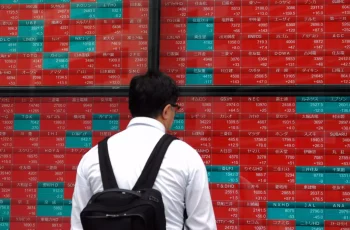The turmoil rippling through Asia-Pacific markets signals more than a momentary dip—it reflects deeper economic distress rooted in intensifying trade tensions. On Friday, Australia’s S&P/ASX 200 fell 2.28%, Japan’s Nikkei 225 crashed 5.46%, and South Korea’s Kospi dropped 1.55%. The global ripple effect of Wall Street’s sell-offs underscores investor fears driven by escalating friction between the U.S. and China, shaking the pillars of global economic stability.

Trump’s temporary pause on tariffs offered momentary relief, but as ANZ analysts noted, “the extension of time does not alleviate uncertainty.” Markets remain shadowed by unpredictability, where erratic trade negotiations undercut long-term planning. For investors and businesses alike, this instability is a major barrier to confidence and growth.
Tariffs are taking a devastating toll. The cumulative U.S. tariff rate on China has soared to 145%, combining a new 125% import duty with an existing 20% fentanyl-related tariff. These measures strain already fragile trade ties and risk paralyzing industries that depend on global cooperation, fueling job losses and economic stagnation instead of innovation.
Despite chaos, U.S. stock futures showed slight upticks, with the S&P 500 and Nasdaq 100 inching upward. However, this modest optimism is fragile, as major indices remain in decline, reflecting persistent investor unease.

The road ahead looks increasingly bleak. Without clear, collaborative trade policies, today’s market dips may be just the beginning of a broader global downturn. The question is no longer about a short-term bounce—it’s whether global leaders can shift from confrontation to cooperation before long-term damage sets in.

